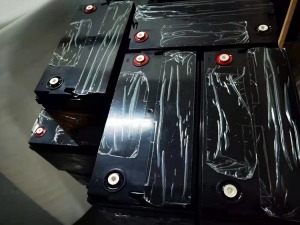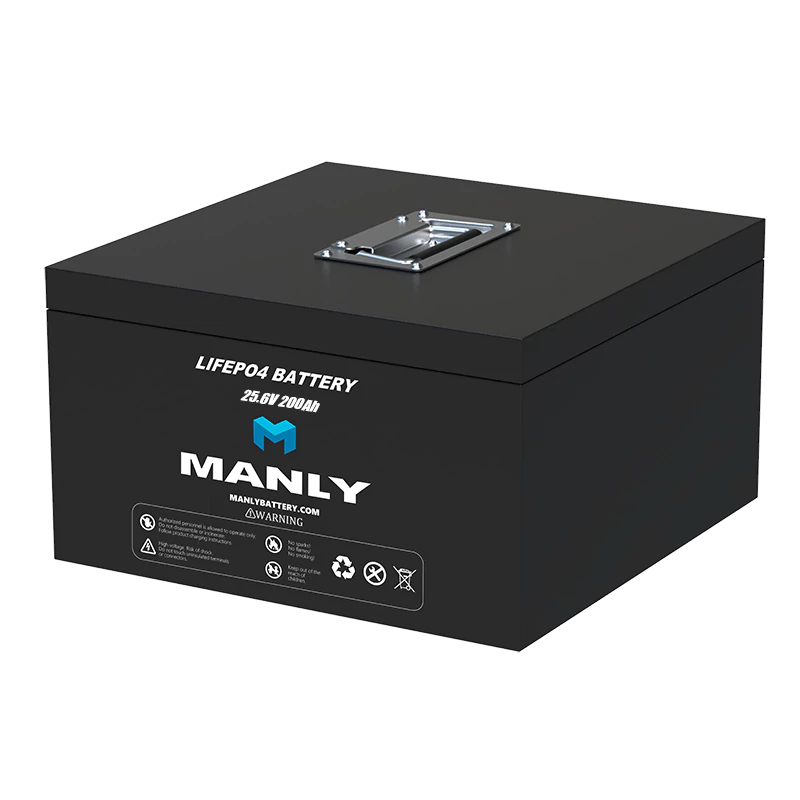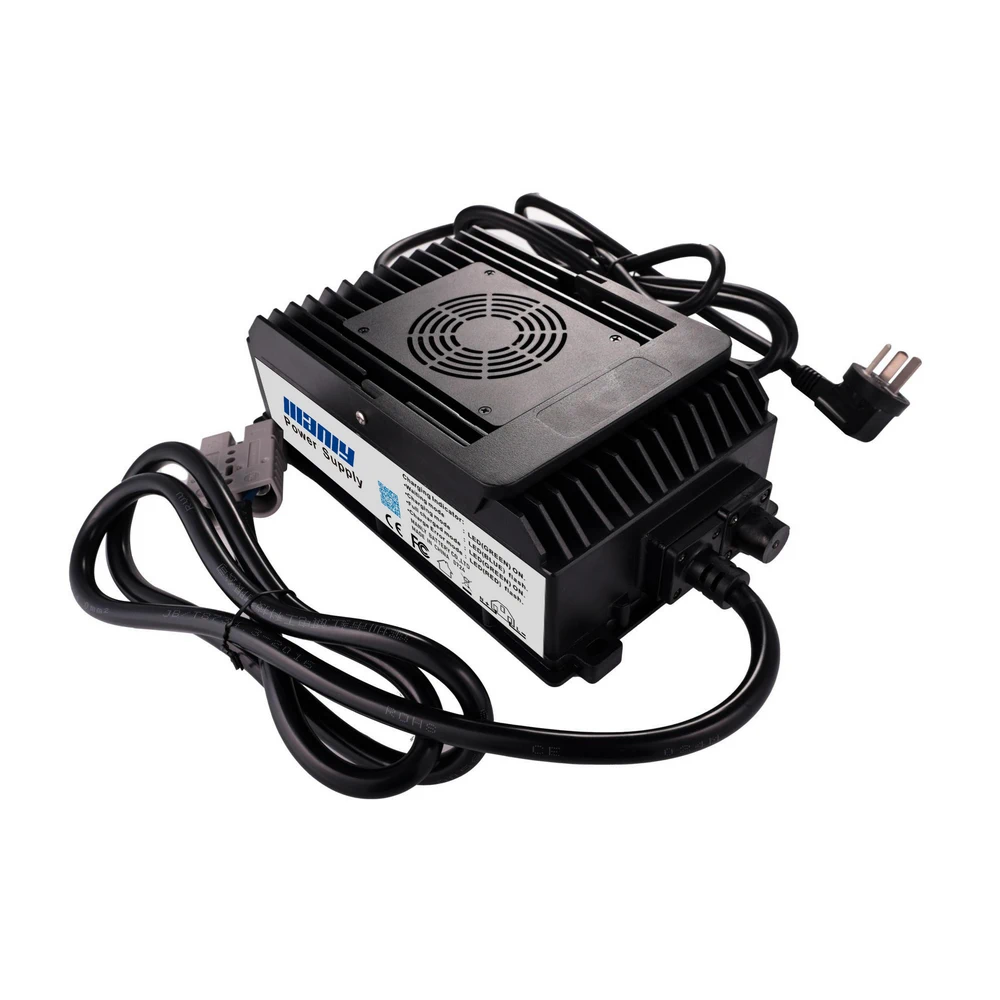2025 How Long Does A Tractor Battery Last
Table of Contents
- 2025 How Long Does A Tractor Battery Last
- Understanding Tractor Battery Types
- Factors Influencing Tractor Battery Lifespan
- Charging Tips: How to Charge a Farm Tractor Battery
- Tractor Battery Maintenance
- How to Replace a Tractor Battery
- A. Safety First: Wearing Protective Gear, Disconnecting the Negative Cable First
- B. Removal Steps: Properly Lifting and Handling a Heavy Battery
- C. Installation Procedure: Securing the New Unit, Reconnecting Cables, Testing Performance
- D. Recycling: Environmentally Responsible Disposal Practices or Trading in Old Batteries
- Key Takeaways
- Conclusion
- FAQ
- Hot Search
- Learn More About Battery

Understanding Tractor Battery Types
A. Different Batteries for Internal Combustion and Electric Tractors
Internal combustion tractors typically rely on a tractor battery designed to provide strong bursts of power for starting the engine. These starting batteries can be lead-acid (including flooded or AGM types) or even lithium-based in newer setups. In contrast, electric tractors often use an Electric Tractor battery pack—commonly lithium-ion—that delivers sustained energy to power motors, especially useful for longer run times and zero-emission operations.B. Lead-Acid vs. Lithium-Ion
Lead-Acid Basics: Lead-acid is the classic, cost-effective choice for a tractor battery, offering reliable cold-cranking amps. However, it’s heavier, may require more tractor battery maintenance, and has a shorter overall lifespan compared to newer technologies. Still, many farmers choose lead-acid (including AGM) for starting power on internal combustion tractors due to affordability and easy availability.Lithium-Ion Advantages: A tractor lithium battery is lighter, charges faster, and has a higher cycle life. While the initial cost is higher, it reduces long-term expenses because you spend less on replacements and repairs. Lithium-ion is also common in electric vehicles, delivering cleaner energy and enhanced performance. When used in agriculture, it can simplify daily chores by offering minimal maintenance and quicker charging intervals.C. Emerging Electric Tractor Battery Options
Innovations: Manufacturers are progressively introducing Electric Tractor battery setups to support zero-emission farming. These batteries integrate advanced lithium-ion cells, reducing fuel costs and significantly cutting air pollution. With fewer moving parts, electric tractors offer smoother, quieter operations—especially beneficial in areas with strict noise or emission regulations.Applications: Electric tractor technology pairs seamlessly with renewable energy sources such as solar panels, allowing direct recharge from on-farm installations. This synergy reduces reliance on fossil fuels while supporting broader sustainability goals. Whether you manage a large-scale commercial farm or a smaller family operation, opting for electric solutions can help you lower environmental impact and operating costs over the long term.Lead-Acid vs. Lithium-Ion: Tractor Battery Comparison
| Battery Type | Usage (Internal Combustion) | Usage (Electric Tractor) | Key Benefits (Data) | Drawbacks (Data) |
|---|---|---|---|---|
| Lead-Acid | Primarily a starter battery for diesel/gas engines. | Generally not suited for main power; may assist auxiliary systems. | 1. Upfront cost is relatively low, often by 30–50% compared to newer battery technologies. 2. Simple, proven design with easy availability. | 1. Shorter lifespan (~2–4 years), leading to more frequent replacements. 2. Heavier, potentially 2–3× the weight of Li-ion for similar output. |
| Lithium-Ion | Sometimes retrofitted for quick starts and lighter weight. | Main choice for an Electric Tractor battery, delivering zero-emission operation. | 1. Long service life (~5–8 years) and faster charging capability. 2. Higher energy density (~20–40% more capacity in the same footprint). | 1. Greater initial investment, which may be challenging for smaller operations. 2. Requires specialized chargers and temperature management. |
Factors Influencing Tractor Battery Lifespan
Understanding how long a tractor battery lasts involves more than just its initial quality. Elements such as usage frequency, storage conditions, regular upkeep, and charging routines all play key roles in determining the lifespan of both lead-acid and tractor lithium battery options. Below is a concise comparison table that highlights the approximate impact each of these factors can have on overall battery service life.| Factor | Data Impact |
|---|---|
| Usage Hours | - Continuous operation may shorten a tractor battery lifespan by 20–30% - Intermittent use can extend it by 15–20% |
| Maintenance Practices | - Regular lead-acid checks can reduce failures by roughly 25% - A well-maintained battery can last 1–2 years longer than a neglected one - For a tractor lithium battery, periodic inspections can add 10–15% more runtime over its lifespan |
| Storage & Climate | - Extreme temperatures can degrade capacity by 10–25% per year - Storing batteries within 50–85°F (10–30°C) may add 6–12 months of reliable performance |
| Charging Habits | - Frequent full discharges can cut service life by 20–30% - Partial charging or topping off can preserve 10–15% of total capacity - Overcharging a lead-acid battery may reduce its lifespan by up to 25% |
Usage Hours: Continuous vs. Intermittent Use
Frequent, all-day fieldwork can shorten a tractor battery lifespan by up to 20–30%, especially if the tractor rarely powers down. In contrast, intermittent use—where the machine runs for 2–3 hours, followed by rest—may prolong service life by about 15–20%. Whether it’s a traditional lead-acid pack or a tractor lithium battery, controlling operating durations helps avoid excessive heat buildup and stress on internal components.
Maintenance Practices
A well-maintained tractor battery can last 1–2 years longer compared to a poorly maintained one. For lead-acid models, regular checks (monthly for fluid levels and corrosion) can reduce premature failures by around 25%. Even for an Electric Tractor battery, periodic inspection of charging ports, cables, and software updates can extend operating life by roughly 10–15%. Consistent tractor battery maintenance prevents unexpected downtime and lowers overall replacement costs.Storage and Climate
Extreme temperatures can degrade battery capacity by 10–25% per year if left unprotected. Storing your tractor in a temperature-controlled environment may improve longevity by as much as 15%. According to USDA.gov and Energy.gov, keeping batteries in environments within 50–85°F (10–30°C) and at moderate humidity levels significantly reduces cell damage over time. Proper off-season storage alone can add 6–12 months to a battery’s functional lifespan.Charging Habits
Frequent full discharges can cut service life by 20–30%, while topping off at around 80–90% can keep internal components healthier. For a tractor lithium battery, using a manufacturer-approved charger and avoiding extreme fast-charging routines can preserve up to 10–15% of total capacity over its lifespan. Meanwhile, overcharging a lead-acid tractor battery may shorten its life by up to 25%, emphasizing the need for proper voltage settings. Good charging practices also benefit an Electric Tractor battery, helping maintain efficient field performance.Charging Tips: How to Charge a Farm Tractor Battery
Properly charging your tractor battery is essential to ensure optimal performance and longevity. Whether you’re using a traditional lead-acid battery or a modern Electric Tractor battery, following the right charging practices can prevent premature wear and maximize efficiency. This section provides comprehensive guidelines on general charging procedures and specific instructions for charging a 6-volt tractor battery.A. General Charging Guidelines
Steps for Safe and Effective Charging
- Correct Cable Connections: Always connect the positive terminal of the charger to the positive terminal of the tractor battery, and the negative to the negative. Incorrect connections can lead to short circuits or damage to the battery.
- Recommended Voltage: Use a charger that matches the battery’s voltage specifications. For most tractor batteries, this means selecting a charger that provides a steady 6 volts for a 6-volt battery or 12 volts for a 12-volt system.
- Safe Equipment Usage: Ensure that the charger is in good working condition and suitable for your specific battery type. Avoid using damaged chargers, and always follow the manufacturer’s instructions to prevent accidents.
Maintenance to Avoid Overcharging
Overcharging a tractor battery can significantly reduce its lifespan. To prevent this:- Use Smart Chargers: Invest in chargers with automatic shut-off features that stop charging once the battery reaches full capacity. This minimizes the risk of overcharging.
- Monitor Charging Times: Adhere to recommended charging durations. For example, charging a fully depleted lead-acid battery for more than 8 hours can cause sulfation, which diminishes battery performance.
- Regular Inspections: Periodically check the battery and charger for signs of wear or damage. Clean any corrosion on terminals and ensure connections remain secure.
B. Specifics: How Long to Charge a 6 Volt Tractor Battery
Voltage Matching: Importance of Using a Compatible Charger
Using a charger that matches the battery’s voltage is crucial for maintaining battery health. For a 6-volt tractor battery:- Compatibility: Ensure the charger is specifically designed for 6-volt systems. Using a higher voltage charger can lead to overheating and potential battery failure.
- Charger Settings: Many modern chargers come with adjustable settings. Set the charger to 6 volts and select the appropriate charging mode (e.g., slow charge for longevity or fast charge for quick turnaround).
Standard Charge Times: Common Durations to Prevent Damage and Extend Service Life
The charging duration for a 6-volt tractor battery varies based on the battery type and its current state of discharge:- Lead-Acid Batteries:
- Standard Charge Time: Typically, it takes about 8 to 12 hours to fully charge a deeply discharged 6-volt lead-acid battery using a standard charger.
- Maintenance Charging: For batteries that are regularly used, a maintenance charge of 2 to 4 hours can keep the battery in optimal condition without overcharging.
- Lithium-Ion Batteries:
- Faster Charging: A 6-volt tractor lithium battery can often be charged to full capacity in 4 to 6 hours due to higher efficiency and faster charging capabilities.
- Smart Charging: Utilize chargers with lithium-compatible settings to ensure safe and efficient charging, preventing potential damage from improper voltage or current levels.
Key Takeaways
- Proper Charging Practices: Ensuring correct cable connections, using the recommended voltage, and employing safe charging equipment are fundamental to maintaining your tractor battery.
- Avoid Overcharging: Utilize smart chargers and adhere to recommended charging times to prevent battery degradation and extend its lifespan.
- Specific Charging Needs: Understand the distinct charging requirements for different battery types, such as 6-volt lead-acid and lithium-ion batteries, to ensure efficient and safe charging.

Tractor Battery Maintenance
Proper tractor battery maintenance is essential to ensure reliable performance and extend the lifespan of your power source. Whether you’re managing a traditional lead-acid battery or a modern Electric Tractor battery, consistent upkeep can prevent unexpected failures and costly replacements. This section outlines key maintenance practices, including inspection routines, fluid checks for lead-acid batteries, and protective measures to safeguard your tractor battery in various environments.A. Inspection Routine: Checking Terminals, Cleaning Corrosion, Testing Voltage
Regular inspections are fundamental to maintaining a healthy tractor battery. Implementing a consistent inspection routine can identify potential issues before they escalate, ensuring uninterrupted farming operations.- Checking Terminals:
- Frequency: Inspect battery terminals at least once a month.
- Procedure: Look for signs of corrosion, such as white or bluish deposits around the terminals.
- Impact: Corroded terminals can impede electrical flow, reducing battery efficiency and increasing the risk of starting failures.
- Cleaning Corrosion:
- Tools Needed: Baking soda, water, a wire brush, and protective gloves.
- Steps:
- Disconnect the battery by removing the negative cable first.
- Mix a solution of baking soda and water to neutralize the acid.
- Apply the solution to the corroded areas and scrub gently with a wire brush.
- Rinse with clean water and dry thoroughly before reconnecting.
- Benefits: Regular cleaning prevents corrosion buildup, ensuring optimal electrical connections and prolonging tractor battery life.
- Testing Voltage:
- Frequency: Test battery voltage monthly using a multimeter.
- Ideal Range:
- Lead-Acid Batteries: Should read between 12.4 to 12.7 volts when fully charged.
- Lithium-Ion Batteries: Typically maintain a higher voltage range, depending on the specific chemistry.
- Action Steps:
- If voltage is below the ideal range, consider recharging the battery promptly to prevent deep discharge, which can significantly reduce lifespan.
B. Fluid Checks (Lead-Acid): Ensuring Adequate Electrolyte Levels
For lead-acid batteries, maintaining proper electrolyte levels is crucial for efficient operation and longevity. Electrolyte, a mixture of sulfuric acid and water, facilitates the chemical reactions that generate electrical power.- Checking Electrolyte Levels:
- Frequency: Inspect electrolyte levels monthly, especially during peak usage seasons.
- Procedure:
- Remove the battery caps carefully to avoid acid exposure.
- Ensure that each cell is filled to the recommended level, typically covering the plates by about ¼ inch.
- Tools Needed: Protective gloves, eye protection, and a clean cloth.
- Refilling Electrolytes:
- When Needed: If electrolyte levels are low, add distilled water to reach the appropriate level. Avoid using tap water to prevent mineral buildup.
- Caution: Do not overfill, as this can cause acid to spill during charging.
- Benefits of Proper Fluid Maintenance:
- Prevents Sulfation: Maintaining electrolyte levels reduces the risk of sulfation, where lead sulfate crystals form on the battery plates, hindering performance.
- Enhances Efficiency: Adequate electrolyte ensures optimal chemical reactions, maximizing energy output and extending battery life.
C. Protective Measures: Keeping Battery Compartment Clean and Dry, Using Insulating Covers in Cold Climates
Implementing protective measures helps shield your tractor battery from environmental factors that can degrade performance and reduce lifespan.- Keeping the Battery Compartment Clean and Dry:
- Regular Cleaning: Remove dirt, debris, and moisture from the battery compartment to prevent corrosion and electrical shorts.
- Ventilation: Ensure adequate airflow to disperse heat generated during charging and operation, reducing the risk of overheating.
- Using Insulating Covers in Cold Climates:
- Purpose: Insulating covers help maintain a stable temperature around the battery, preventing extreme cold from reducing battery capacity and performance.
- Types of Covers: Thermal wraps or battery blankets designed specifically for agricultural equipment.
- Benefits:
- Prevents Freezing: Protects the battery from freezing temperatures, which can cause internal damage.
- Maintains Efficiency: Helps sustain optimal operating temperatures, ensuring consistent performance during cold weather.
- Additional Protective Measures:
- Secure Mounting: Ensure the battery is firmly mounted to minimize vibrations and movement, which can lead to internal damage over time.
- Moisture Barriers: Apply protective sprays or coatings to terminals to repel moisture and prevent corrosion.
Key Takeaways
- Regular Inspections: Monthly checks of terminals, corrosion cleaning, and voltage testing can extend your tractor battery’s lifespan by up to 20%.
- Electrolyte Maintenance: For lead-acid batteries, maintaining proper electrolyte levels can improve longevity by 15–20%.
- Protective Measures: Keeping the battery compartment clean, dry, and insulated in cold climates can enhance durability by 10–15%.
- Consistent Maintenance: Adhering to these practices reduces the risk of unexpected failures, ensuring your Electric Tractor battery or tractor lithium battery performs reliably when needed most.
How to Replace a Tractor Battery
Replacing a tractor battery is a straightforward process when done correctly, ensuring your equipment remains reliable and efficient. Whether upgrading to a traditional lead-acid battery or switching to a high-performance tractor lithium battery from MANLY Battery, following proper procedures is crucial for safety and optimal performance. This guide outlines the essential steps for safely removing and installing a new battery, along with environmentally responsible disposal practices.A. Safety First: Wearing Protective Gear, Disconnecting the Negative Cable First
Safety is paramount when handling a tractor battery. Batteries contain corrosive acids and produce explosive gases, making protective measures essential.- Wear Protective Gear:
- Protective Gloves: Prevent skin contact with battery acid and corrosion.
- Safety Goggles: Shield your eyes from potential splashes.
- Long-Sleeved Clothing: Provides an additional barrier against accidental spills.
- Disconnecting the Negative Cable First:
- Why Negative First: Prevents short circuits by minimizing the risk of accidentally touching the positive terminal while handling tools.
- Steps:
- Turn off the tractor and remove the key to ensure no power is flowing.
- Locate the battery and identify the negative (-) terminal, usually marked with a minus sign or black cable.
- Use a wrench to loosen the negative terminal clamp and carefully disconnect it, setting it aside where it won’t accidentally contact the positive terminal.
B. Removal Steps: Properly Lifting and Handling a Heavy Battery
Tractor batteries can be heavy and cumbersome, requiring careful handling to avoid injury and damage to the equipment.- Assess the Battery Weight:
- Average Weight: Lead-acid batteries typically weigh between 40 to 70 pounds, while tractor lithium batteries from MANLY Battery are lighter, often 20–30% less due to advanced materials.
- Use Proper Lifting Techniques:
- Team Lift: If possible, have a second person assist in lifting the battery to prevent strain or dropping.
- Lift with Your Legs: Bend at the knees, not the waist, to lift the battery safely.
- Remove the Battery:
- Secure the Battery: Hold the battery firmly and carefully lift it out of the compartment.
- Avoid Spills: Keep the battery upright to prevent electrolyte leakage from lead-acid batteries.
C. Installation Procedure: Securing the New Unit, Reconnecting Cables, Testing Performance
Installing a new tractor battery involves securing it correctly and ensuring all connections are tight and functional.- Secure the New Battery:
- Positioning: Place the new battery in the compartment, ensuring it fits snugly and is stable.
- Mounting: Use the existing brackets or clamps to secure the battery firmly, preventing movement during operation.
- Reconnect the Cables:
- Positive Cable First: Attach the positive (+) terminal first to reduce the risk of short circuits.
- Negative Cable: Reconnect the negative (-) terminal securely.
- Test Performance:
- Initial Check: Turn on the tractor to ensure the battery is functioning correctly.
- Voltage Test: Use a multimeter to verify the voltage output matches the manufacturer’s specifications.
D. Recycling: Environmentally Responsible Disposal Practices or Trading in Old Batteries
Proper disposal of old tractor batteries is essential to protect the environment and comply with regulations.- Identify Recycling Options:
- Local Recycling Centers: Many communities have facilities that accept lead-acid and lithium batteries for recycling.
- Retailer Take-Back Programs: Some battery retailers offer recycling services when you purchase a new battery.
- Prepare the Battery for Transport:
- Secure the Terminals: Cover the battery terminals with non-conductive caps or tape to prevent accidental short circuits.
- Proper Packaging: Use a sturdy box or container to transport the battery safely.
- Consider Trading In:
- Battery Trade-In Programs: Some manufacturers, including MANLY Battery, offer trade-in programs where you can return your old battery when purchasing a new one, ensuring responsible disposal and potential discounts on future purchases.
Key Takeaways
- Safety First: Always wear protective gear and disconnect the negative cable first to prevent accidents.
- Proper Handling: Use correct lifting techniques to safely remove and install heavy batteries.
- Secure Installation: Ensure the new battery is properly secured and connections are tight for optimal performance.
- Responsible Recycling: Dispose of old batteries through certified recycling programs to protect the environment.
- Upgrade with MANLY Battery: Consider high-performance tractor lithium batteries from MANLY Battery for enhanced efficiency and longevity.




















